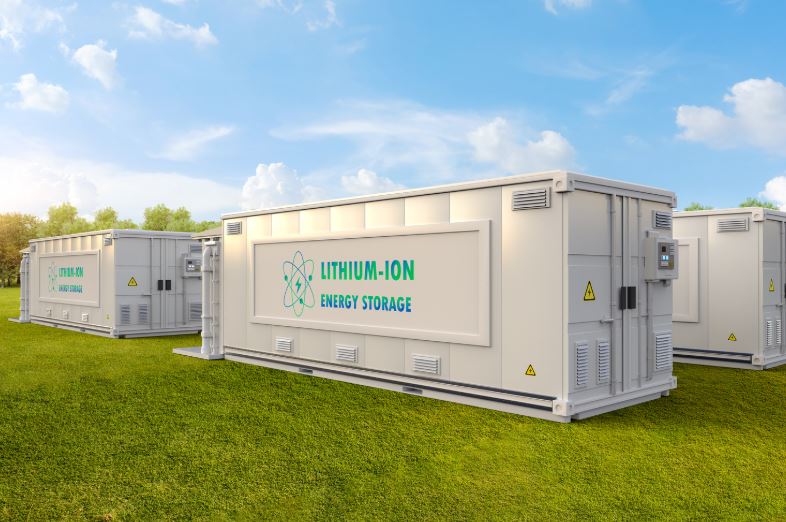Corporate funding for energy storage companies plummeted 41% year-over-year in the first half of 2025, dropping from $15.4 billion across 64 deals to $9.1 billion spanning 55 transactions. This dramatic contraction, according to Mercom Capital Group’s latest market analysis, represents the sector’s most significant funding decline since tracking began, driven primarily by regulatory uncertainty surrounding U.S. Investment Tax Credit modifications and Inflation Reduction Act provisions.
The magnitude of this downturn becomes more pronounced when examining funding components individually. Venture capital investments decreased 29% to $1.7 billion across 36 deals, while debt and public market financing experienced an even steeper 43% decline, falling from $13 billion in 16 deals to $7.4 billion across 19 transactions. These figures suggest institutional investors adopted a risk-averse stance, prioritizing capital preservation over growth investments during the policy uncertainty period.
Market Segmentation Reveals Strategic Shifts
Energy storage downstream companies captured the largest share of venture capital funding, indicating investor preference for companies closer to revenue generation rather than early-stage technology development. This risk mitigation strategy becomes evident in the top five VC transactions: KoBold Metals secured $537 million, Green Flexibility raised $411 million, and Base Power obtained $200 million. These companies represent established market positions with clearer paths to profitability compared to pure-play technology developers.
The funding distribution across segments—materials and components, energy storage systems, sodium-based batteries, and thermal energy storage—reflects a diversification strategy as investors hedge against technological and regulatory risks. Sodium-based battery companies, in particular, attracted attention as alternatives to lithium-ion systems amid supply chain concerns and cost pressures.
M&A Activity Diverges Along Asset Lines
Corporate merger and acquisition activity contracted sharply, with only three transactions recorded compared to 14 in the first half of 2024. However, this decline contrasts starkly with project-level M&A activity, which surged 138% from 13 to 31 transactions. This divergence indicates investors distinguished between operational assets with established revenue streams and corporate entities requiring ongoing capital investment.
The preference for advanced-stage projects—those licensed, permitted, under construction, or nearing completion—signals a flight to quality. Buyers pursued tangible assets with predictable cash flows rather than speculative corporate investments dependent on uncertain policy outcomes. Market conditions also created acquisition opportunities at favorable valuations, as sellers faced financing pressures.
Smart Grid Sector Demonstrates Resilience
Smart grid companies exhibited relative stability, with corporate funding declining only 13% to $1.4 billion across 48 deals. This performance significantly outpaced the broader clean energy sector downturn, driven by sustained investment in smart charging technologies. The $1.1 billion in venture capital funding across 41 deals represents just an 8% year-over-year decrease, demonstrating investor confidence in grid infrastructure technologies.
Believ’s $410 million funding round led smart grid investments, followed by Connected Kerb’s $81 million and Smart Wires’ $65 million raises. These investments reflect growing recognition that grid optimization technologies are essential for managing increased renewable energy integration. Unlike energy storage companies dependent on tax incentives, smart grid technologies address fundamental infrastructure needs regardless of policy changes.
Policy Resolution Creates Recovery Framework
The completion of policy legislation, despite unfavorable provisions, established the regulatory clarity investors required. Energy storage companies retained tax credits for installations, contrasting with more significant policy impacts on solar and wind sectors. This relative policy stability positions energy storage for recovery in the second half of 2025.
The market’s “wait-and-see” approach during policy uncertainty created pent-up demand for investment opportunities. With regulatory direction settled, institutional capital previously held in reserve can now be deployed across the energy storage value chain. Companies that maintained operations through the funding drought are positioned to benefit from returning investor confidence.
The first half of 2025 downturn reflects market maturation rather than fundamental sector weakness. Investors increasingly differentiate between speculative technology plays and established market participants with proven business models. This discrimination suggests a more sustainable investment environment emerging as the sector transitions from early adoption to mainstream deployment.
Advanced-stage project acquisitions at favorable valuations demonstrate continuing underlying demand for energy storage assets. The infrastructure build-out continues despite corporate funding constraints, indicating the sector’s long-term growth trajectory remains intact. Companies with strong balance sheets and established market positions are consolidating market share while competitors face financing challenges.
The smart grid sector’s relative outperformance highlights the importance of addressing immediate infrastructure needs rather than depending solely on policy incentives. Grid optimization technologies solve pressing reliability and efficiency challenges, creating sustainable demand independent of regulatory support. This market dynamic provides a template for energy storage companies seeking to reduce policy dependency through essential infrastructure positioning.
